10 Things Worth Noticing In the Second 'Rogue One: A Star Wars Story' Trailer
Rogues
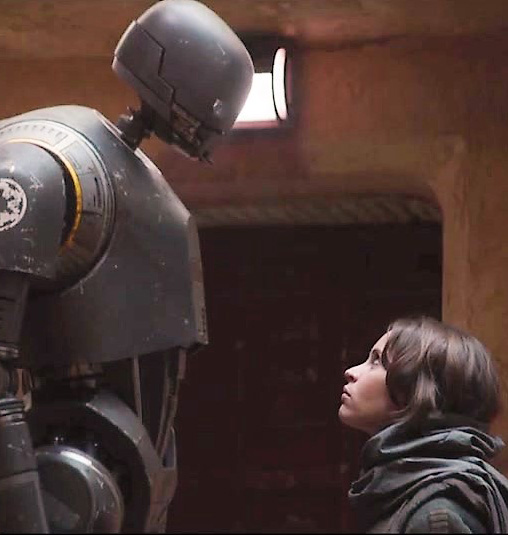
There's a new trailer out for "Rogue One: A Star Wars Story" and it's absolutely packed full of mouth-watering little details about the story, as well as some really striking visuals and science. Space.com teamed up with our sister site Newsarama to help analyze the new trailer, thus sending it through a dual filter of sci-fi know-how and real-space-science knowledge. Here are 10 things that stood out to us – both in terms of the "Rogue One" relation to the "Star Wars" universe and the one in which we live.
Darth Vader
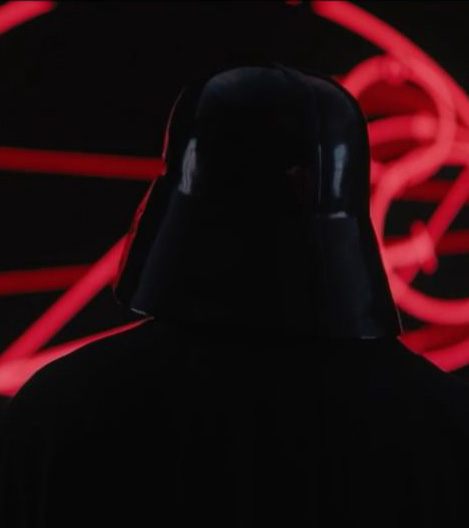
Darth Vader was, arguably, the main character of the first six chapters of the big screen "Star Wars" saga, with Anakin Skywalker’s arc starting in "The Phantom Menace and coming to a close in "Return of the Jedi." And, though he doesn’t actually appear onscreen, his legacy is felt throughout "The Force Awakens."
But Rogue One brings Vader back to the movie theater – the real Vader, even voiced by the man who originally brought him to life, James Earl Jones.
He glimpsed only briefly in this trailer for Rogue One, but his presence looms large over the film.
Imperial Turncoats
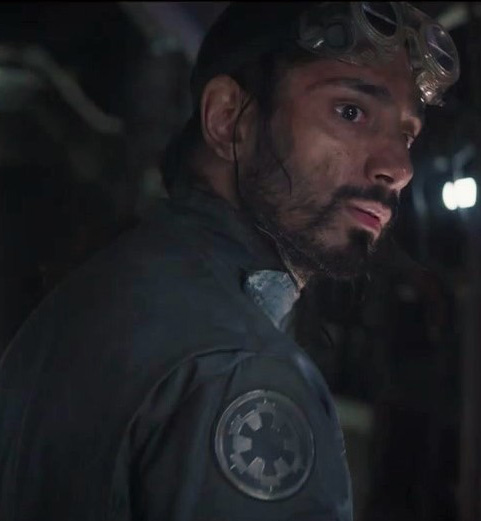
Riz Ahmed's Bodhi Rook and the enforcer droid K-2S0 (voiced by Alan Tudyk) have a strong presence in the film. With the knowledge that Bodhi is an Imperial defector, the pair's presence are felt chiefly in the new "Rogue One" trailer.
K-2S0 is said to be a former Imperial droid reprogrammed to serve the Alliance.
See Saw Gerrera
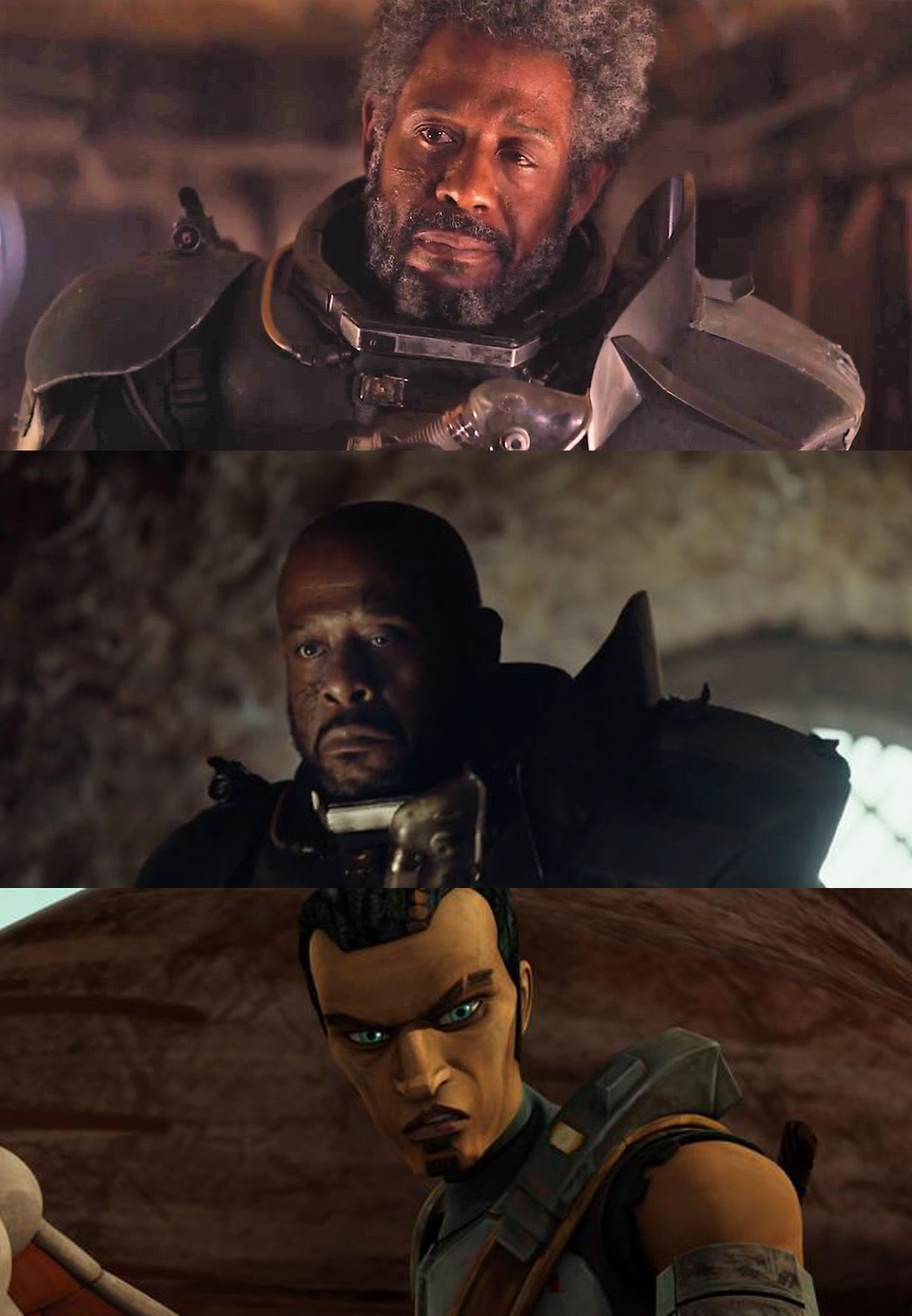
Saw Gerrera is a unique prospect for the "Star Wars" films in that he is one of the first to make the jump from animation to live action. In "The Clone Wars" animated series, Saw Gerrera was a freedom fighter against the Empire.
Forrest Whitaker's much more grizzled take on the character may be a mentor or foil for Jyn Erso. He's even shown some changes since the first trailer for "Rogue One," with Whitaker looking much older in the new trailer. Could Saw Gerrera's story be told partially in flashbacks?
Totally Eclipse of the Jedi
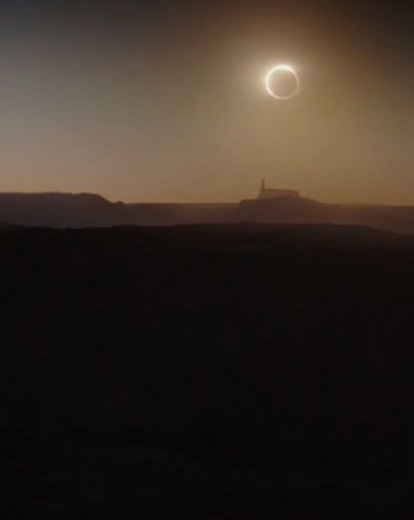
The "Death Star eclipse" is a great visual shot (a la Tim Burton's "Batman" moment with the Batwing), but if you take a closer look it's more than just a visual flourish.
It's actually possible to see this kind of eclipse from Earth: it's called an annular eclipse, or a "ring of fire" eclipse. During total solar eclipse, the moon completely blocks out the disk of the sun. But an annular eclipse takes place when the moon is slightly further away from the Earth in its orbit, so the disk of the sun isn't totally covered. There's an annular solar eclipse happening on Sept. 1, but it will only be visible from parts of Africa and the Indian Ocean.
Note that it's doing such above that walled city on the planet we presume to be the "Jedi holy land," Jedha. The trailer has already shown the Death Star to be in close orbit of the planet, but what if it's being utilized in another manner – to cause an artificial darkness on part of the planet with this eclipse.
If you step out on the ledge of that theory, it adds much more resonance to the night-time battle scenes seen in this trailer.
Build-A-Death-Star Workshop
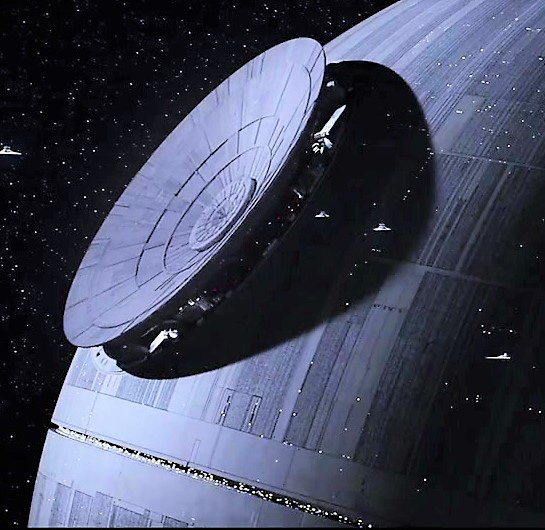
There are a lot of locations featured in the new trailer, and one of those appears to be inside the Death Star. It's possible the new movie will give some information about the construction of this megalithic space structure. Building stuff in space is difficult and expensive, and plenty of people have poked holes in the feasibility of the Death Star, but with recent real-world advances in space-based habitats, I'm excited to get a closer look at this fictional space structure. (For a sense of scale, the International Space Station took 10 years to build, at a cost of about 100 billion dollars and can only host about 6 people, or up to 13 if you really push it).
Orbit
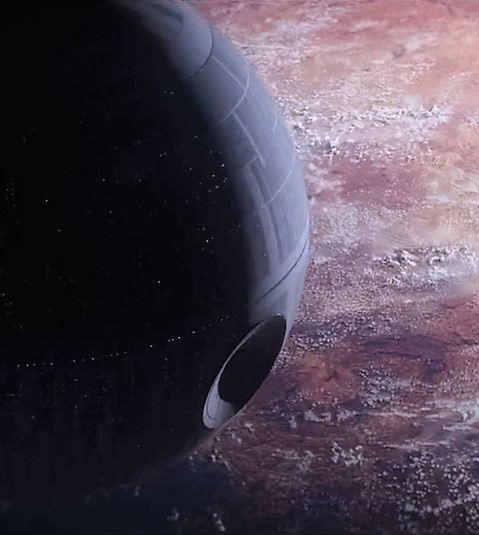
Thumbs up to the person who created the wide view of what might be the planet Jedha, seen through the window of some Imperial ship. The view shows the curve of the planet, and includes sunlight streaming through layers of atmosphere — a detail that some science fiction movies miss. Clearly, someone did their homework, because the shot looks exactly like shots of the Earth from space.
However, if that view is supposed to be from inside the Death Star then my improbability meter goes haywire again — something as big as the Death Star can't get that close to a planet without crashing into it!
Then again – it’s no moon.
Death Star Shoots First
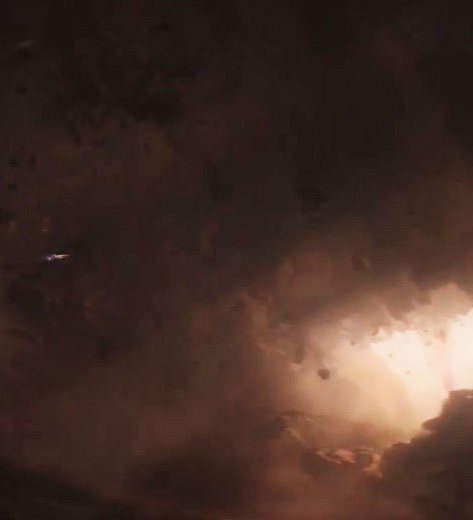
Everyone who's seen "Star Wars Episode IV: A New Hope" knows that the first Death Star was fired on Alderaan – but who's to say that was the first time the fully operational station was fired up?
"Rogue One" is all about the team of Rebel commandos who seized the plans for the Death Star and discovered the flaw that allowed Luke Skywalker to blow it up. But from the looks of the newest trailer, they may not have been able to stop the Empire from at least test-firing the weapon.
With an assemblage of Imperial officers peering out the window as Darth Vader examines a red display, similar to the one seen during "A New Hope" in the firing sequence, implies that the Death Star may be activated at least once in "Rogue One," especially when you factor in those ground-shattering brief moments glimpsed briefly (as seen here).
The Force Is Alive
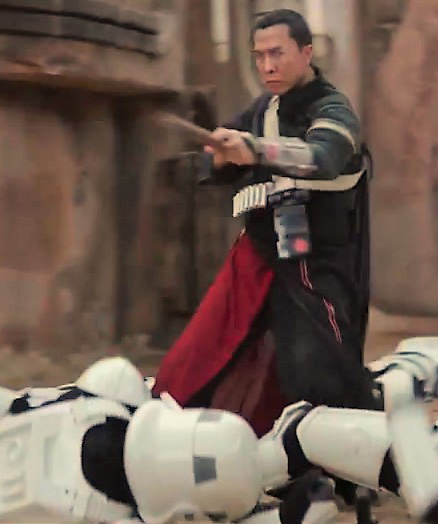
The Force has been a big part of "Star Wars" on film, forming the basis for the original and prequel trilogies, and even being namechecked in the most recent installment’s subtitle. But so far, the only people we've known to be in touch with the Force are Jedi.
In the greater Star Wars universe, there are other Force traditions that tap into the universal life essence but don’t follow Jedi principles (kind of like real world religions). Donnie Yen's Chirrut Imwe looks to be, at least partly, a devotee of one of these alternate Force traditions.
If so, that would make Chirrut the first non-Jedi Force practitioner to appear in a big screen Star Wars film.
General Grievous, while he used lightsabers, didn't actually practice the Force.
Star Destroyer Physics
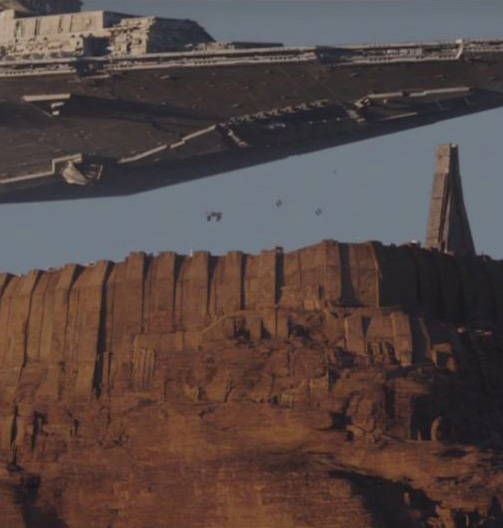
"Star Wars" may take place long, long ago, but some of their tech is light-years ahead of current knowledge.
There's a beautiful shot of a Star Destroyer that looks like its floating (ominously?) in the atmosphere above a city. I'm not here to pick apart the technology in a science fiction movie, but for something that massive to just float like that so close to the surface of the planet is ... let's say it's impossible within the realm of current knowledge.
In fact, while I love the shot of Jyn Erso (Felicity Jones) walking right up to the rising TIE Fighter, my brain can't help but note that it's very difficult to build ships that can operate in planetary atmospheres, but also launch into and fly through space. The Space Shuttle, for example, needed to catch a ride into orbit on a rocket, and could only glide through Earth's atmosphere on its way down. (It had to ride on the back of a 747 to travel between cities).
Currently, modern "spaceplanes" that launch from the ground can only go to suborbital heights. That said, it's not crazy to think that in the next half century, humans might design ships that can transition directly from the surface of the Earth to space-based destinations without a middle man. That's not so far-fetched as to seem totally unrealistic.
Jedi Jerusalem
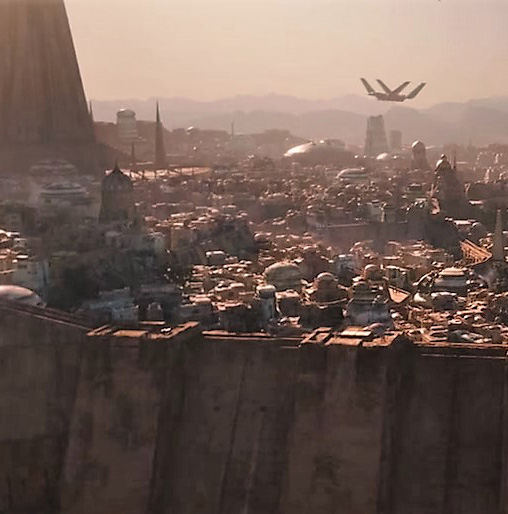
"Rogue One" director Gareth Edwards has said one of the key worlds of the film will be a "Jedi holy land" called Jedha, and the walled city in the opening of this new trailer seems to fit the bill: Obelisks, aqueducts, and even a looming building looking very similar to the Jedi Temple on Coruscant. One could say it’s all coming together to be an analogy of the real-life city of Jerusalem.
And of course, loominig over it all is a Star Destroyer – making a rare in-atmosphere appearance. That lends credence to the idea that this unnamed city on Jedha is under occupation by Imperial forces, and that this is the city seen in the various trailers being patrolled by Stormtroopers.
So why would the Empire have an interest in a Jedi holy land? It could simply be part of Order 66 – to kill all Jedi – but Edward mentioned casually that Jedha is also one of the few places to mine Kyber crystals – the crystals used for lightsabers, but also as part of the Death Star's superlaser.
Join our Space Forums to keep talking space on the latest missions, night sky and more! And if you have a news tip, correction or comment, let us know at: community@space.com.
Get the Space.com Newsletter
Breaking space news, the latest updates on rocket launches, skywatching events and more!

Newsarama Senior Editor Chris Arrant has covered comic book news for Space.com sister site Newsarama since 2003, and has also written for USA Today, Life, Entertainment Weekly, Publisher's Weekly, Marvel Entertainment, TOKYOPOP, AdHouse Books, Cartoon Brew, Bleeding Cool, Comic Shop News and CBR. He is the author of the book "Modern Masters: Cliff Chiang," co-authored "Art of Spider-Man Classic," and contributed to Dark Horse/Bedside Press' anthology "Pros and (Comic) Cons." He has acted as a judge for the Will Eisner Comic Industry Awards, the Harvey Awards and the Stan Lee Awards. Chris is a member of the American Library Association's Graphic Novel & Comics Round Table. (He/him)

